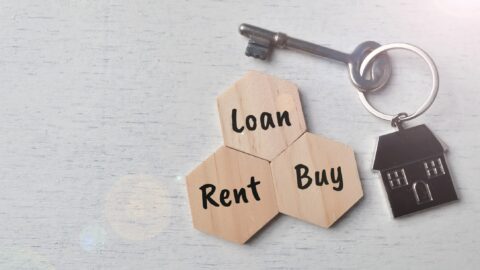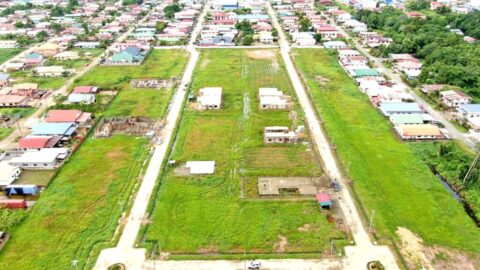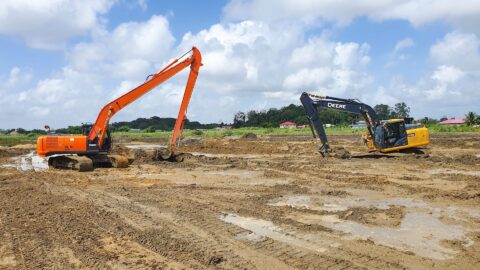Young starters hopeless in housing market
Mortgage rates in Suriname are currently around 20 percent per year on SRD financing and an average of 9 percent on foreign currency financing.
As a result, many well-educated young first-time buyers have no chance of owning their own home.
This, regardless of whether there is double income with husband and wife both working.
The financial banking institutions are generally not transparent about their interest rates.
Also, banks apply different interest rates.
This can be between 14 and 24 percent for a mortgage loan in srd.
Inflation Surinamese currency
The value of the Surinamese currency is not stable.
The consequence of an unstable currency is that it also affects mortgage applications.
A house that was for sale on the housing market 4 years ago for 100,000.00 Euros (SRD 440,000.00), anno 2017 has the same price tag in Euros but you pay in SRD 870,000.00 .
However, the same house has increased in price due to inflation; the SRD has decreased in value.
Homes are largely priced and sold in foreign currency.
They have also usually been purchased and financed in foreign currency in the past.
If an applicant wishes to qualify for a foreign currency mortgage loan, they must be able to demonstrate that they also earn foreign currency as income.
Highly educated young first-time buyers (hereafter referred to as starters) in the housing market who earn a srd salary are not eligible for a foreign currency mortgage loan.
Due to srd inflation, the asking prices for a home do not match an average salary.
Regardless of whether the applicant is highly educated or not.
To clarify, the following example:
Suppose a couple has a family income of 7,000.- srd per month.
They want to buy a 3 room house in an attractive neighborhood.
For this they need a budget of at least 50,000,- srd.
Converted, that is now 435,000,- srd at an interest rate of 20% per year with a term of 25 years.
According to the calculation, the monthly costs would be SRD 6,960.-.
Apart from the fact that the amount is unaffordable for most starters, the house would still not be fully paid off after 25 years.
If the mortgage interest rate were reduced, it would have a positive impact for most starters.
Reduce costs
Based on income and fixed expenses, the bank makes a mortgage calculation.
About 30 to 35% of income should go to paying off home.
This is not affordable for most starters and the result is that the economy stalls.
Development is stalling and young people are staying with their parents longer.
An expense that the buyer should also consider is transportation costs.
Transportation costs involve the delivery and transfer of the property into the new owners name.
Transportation costs include:
- notary fees (costs),
- stamp duty (transfer tax),
- sales tax,
- excerpt,
- bare land value, etc.
The transportation cost depends on the value mentioned in the deed calculating the stamp duty.
The costs range between 10.5-12.5% of the aforementioned recorded value.
Whether the mortgage lender takes into account the conveyancing costs depends on the mortgage applicant.
If the buyer takes out a loan through the bank and he does not have his own funds to pay the conveyancing costs, then depending on the income of the person and the value of the property, these costs can also be co-financed.
In another case, the buyer may take out a loan, but indicates that he does not want to co-finance the transportation costs, but wants to pay them himself from his own resources.
In this case the transportation costs will not be co-financed.
The general rule is: buyer costs.
So a buyer who buys something must always bear in mind that he must pay more than the purchase price.
The transportation costs must be paid immediately upon registration.
It would be a good development to reduce these costs.
When transferring, the buyer should also take into account the clapper value of the piece of land.
The clapper value is intended to establish the value for transfer costs, from which the state also generates revenue.
The website of the “Management Institute for Land Registration and Land Information System” (GLIS) contains the clapper value index.
However, the clapper value used by the government is in foreign currency.
Understandable because they too want certainty and therefore do not want to take on the inflation risk.
But at the time when it is asked to show confidence in our own currency the latter gives a distorted picture of course.
Creating opportunities
The Low Income Shelter Program (Lisp) is for the low-income portion of society.
However, LISP is not an option for first-timers with reasonably good salaries.
Medics, because of the guarantee their work provides, qualify for an additional discount on their mortgage.
This could also be an option for first-time buyers.
The government could make it more fiscally attractive by creating more deductions for homeowners.
For example, if you bought a home with the help of a mortgage, you can deduct some expenses from your gross annual income.
This reduces your taxable income and gives you a tax advantage.
In other words, you pay less tax.
To stimulate the economy and get the housing market moving, the government could subsidize first-time buyers on mortgage interest.
If this important target group starts buying, the government will earn it back the moment they start consuming through OB or, in the future, VAT.
After all, buying or building a home translates into buying building materials and household goods.
Starter subsidy (discount on SRD mortgage interest rate)
This will serve as an incentive for others to pursue further studies, with the guarantee that they will qualify for a subsidy from the government when they purchase a home.
Of course, banks can capitalize on this by giving starters a discount on their interest rates.
These startups will grow financially in the future and are the pillars of any healthy banking institution.















